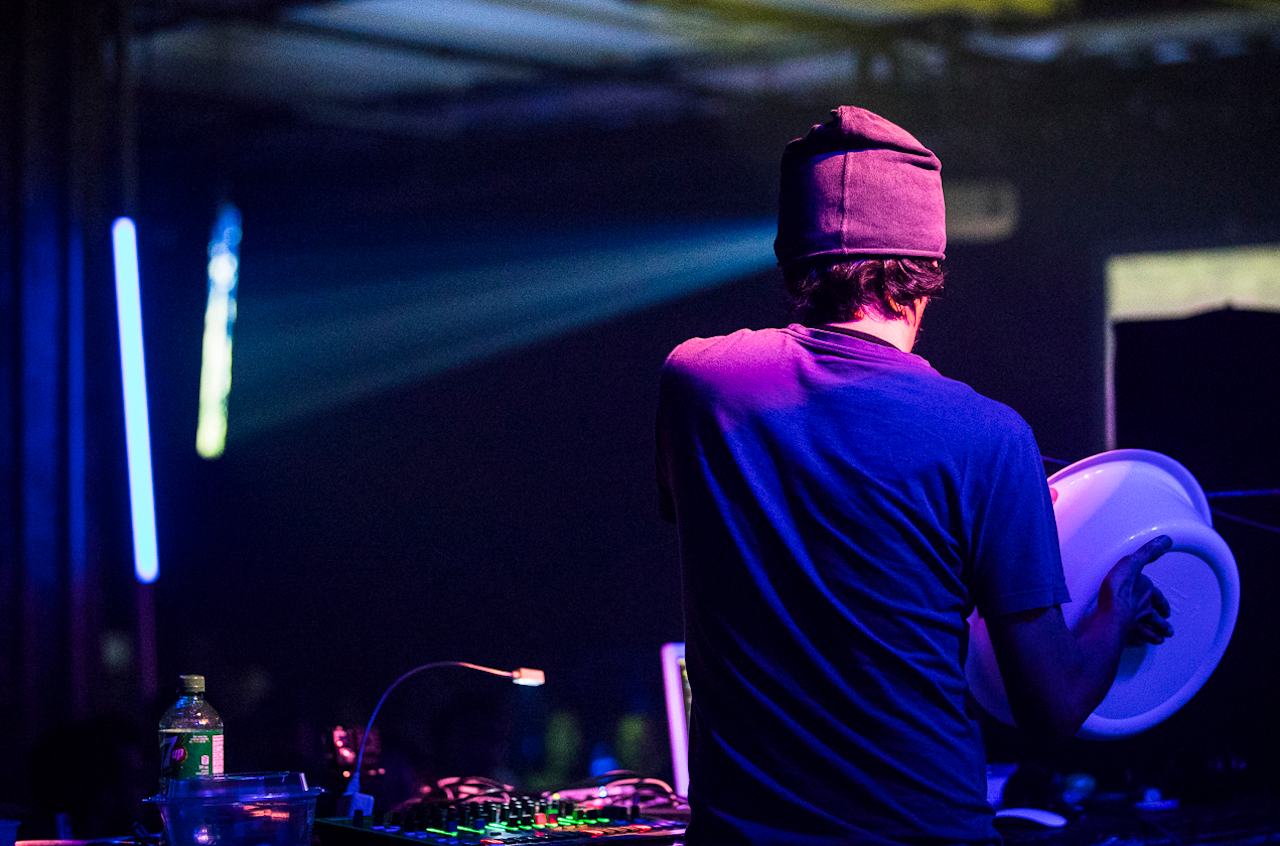- A lot changed at MUTEK in 2017. The week-long showcase moved down the calendar from early June to late August, cutting out a glut of competing cultural events in Montreal while allowing for the cooler weather to take over. The festival, known for its emphasis on live acts, also loosened its policy to allow more DJs into the mix, which made it feel more contemporary and open-ended. Each of the four main days was focused on a different city—Barcelona, Berlin, Mexico City, London—offering a fresh curatorial angle. Most importantly, MUTEK returned to the Société Des Arts Technologiques (or SAT), a multi-floor, audiovisual complex (complete with a 3D dome theatre) that was much better suited to electronic music than the Musée D'Art Contemporain De Montréal.
Otherwise, MUTEK 2017 was really just the same as always: daring, overflowing with ideas and always at the cutting edge—which is remarkable for a festival nearing its second decade of operation. With a clever and all-encompassing lineup that covered everything from the most extreme end of experimental music to the minimal house of Zip—via Beatrice Dillon, Max Cooper, Sensate Focus, Sarah Davachi, ESB, Nicola Cruz and Aurora Halal—it was a year that both reaffirmed and reinvigorated the adventurous spirit the festival has embodied since it started back in 2000.
Here are five key performances from across the weekend.
Deathprod
Norwegian sound artist Helge Sten topped off an ambitious Thursday night program that saw four drone artists perform at the massive, 2300-capacity Métropolis club, which was home to the biggest dance artists at MUTEK. The cavernous space and booming system offered a level of power that drone artists don't often get to work with. Sten made the most of it. Bathed in a single beam of light and flanked by two simple spotlights, he released waves of rumbling drone before pivoting into cascading pulses of distortion that visibly startled the audience. They only grew more aggressive with each new iteration, and the silences between them more tense. At one point, when the music went silent for ten seconds, it felt like being at the top of a rollercoaster about to careen down.
A friend of mine described Sten's set as the loudest sound he had ever heard. Another lasted about six minutes before going home, though I revelled in every new wrinkle and permutation of the deafening roars. Just sitting on the floor and feeling the vibrations was sensory overload. This was ambient music that demanded your full attention. Noise music that was more about the mids and the lows than the piercing highs. It was one of the most intense musical experiences I've ever had.
Marie Davidson
There was a special air around Marie Davidson's set on Saturday night. The beloved synth artist is a Montreal local who has since moved to Berlin, and she had one of the peak-time slots at the INTER_CONNECT Berlin showcase, positioning her alongside artists like rRoxymore and Monolake. But if you were present for her performance in the sweltering SAT, there was no mistaking it for anything other than a homecoming show. Davidson played a particularly hard-hitting set, going on the attack with rapid-fire snares and slamming kicks, giving her work a harder, more EBM-inspired style than usual. Her vocals, one of the defining aspects of her music, were buried underneath the electronics in a bout of unfortunate sound mixing, but it hardly mattered: the way she stalked and moved around the stage was enough to make it one of the festival's most memorable and inspiring performances.
Kara-Lis Coverdale
Kara-Lis Coverdale is another Montreal artist earning steady international acclaim. Often compared to trailblazing producers like Tim Hecker and Oneohtrix Point Never, Coverdale's work combines the pulsating melodies and drones of minimal music with bright, heavily manipulated and often synthetic textures. Synthetic sounds came to the fore in VoxU, a live concept piece that premiered at MUTEK. Focusing on the possibilities of the (in)human voice, it paired the sounds of a pipe organ with all sorts of choral pads and generated vocals. Chintzy sounds were elevated to high art. It was also among Coverdale's calmest and most droning compositions, so constant and occasionally relaxing that one audience member did yoga for the set's 40-minute duration.
But what really made Coverdale's performance special was her control of the room. She played in the Satosphère, a geodesic dome in the SAT built for 3D projections, which hosted some of the festival's most dazzling and immersive visual experiences as part of Resident Advisor's Sunday night showcase. But Coverdale didn't bother with any of that. Instead, she used the lighting rigs that lined the perimeter of the room like an instrument: colours changed to reflect the mood, while other times the room went pitch black, with only a light above her controller visible. She would fill the room with fog at the most intense moments and then let it dissipate. During the brightest sections, even the heat from the lamps felt like a purposeful part of the performance. After an acclaimed turn as an up-and-coming artist at last year's MUTEK, 2017 was the year Kara-Lis Coverdale proved she's a heavy hitter in her own right.
You're Me
You're Me—the recently expanded trio of Vancouver artists Yu Su, Scott Gailey-Johnson and Aiden Ayers—also played in the Satosphère. They benefitted from a visual performance by LLL, whose black-and-white collages stretched and whirled across the walls and ceiling. The group showed off the kind of pastoral, drifting electronics at play on their 2016 debut LP, Plant Cell Division, but this time their sound was more detailed and inventive, bolstered with live bass guitar and combining field recordings with an old-school, new age mood. The band dredged up the sounds of life itself—running water, rainforest atmospheres—to infuse their electronics with warmth, and later debuted a new song that featured a soothing, catchy vocal over a smooth backing track, in the vein of Gigi Masin. It was an unexpected—though surprisingly natural—set from a young band who are turning into one of Canadian electronic music's most promising and idiosyncratic acts.
Kuniyuki
Though it was 2 AM on Monday morning, Kuniyuki took the reins for the final set at MUTEK to a full and energetic crowd. After a beatless intro, the Japanese producer quickly established the lively, playful and improvisational mood that would make his performance one of the most memorable of the week. He bobbed and swayed behind his setup as he banged out quick-footed techno and house beats, making drum loops out of an empty 7 Up bottle, what looked like a colander, and countless other implements. He even broke out a flute.
The evening hit its peak when an excited fan jumped onstage, flailing his arms behind Kuniyuki and dancing around him. When security tried to escort the uninvited guest away, Kuniyuki waved them off and handed the mic to the fan, who bellowed a goofy melody before finally being removed. It was uncomfortable at first, but, smiley and upbeat, Kuniyuki sampled and mixed the off-key vocals into a loop, eliciting raucous cheers from the audience. It was a cathartic release of collective energy after a long, serious festival, and an uncharacteristically goofy moment that reminded me of what makes the whole thing so fantastic. MUTEK is one of the world's most avant-garde electronic music festivals, and Montreal is one of the world's greatest party cities—combine the two and you have a formula that still wows 18 years down the line.
Photo credit /
Trung Nguyen
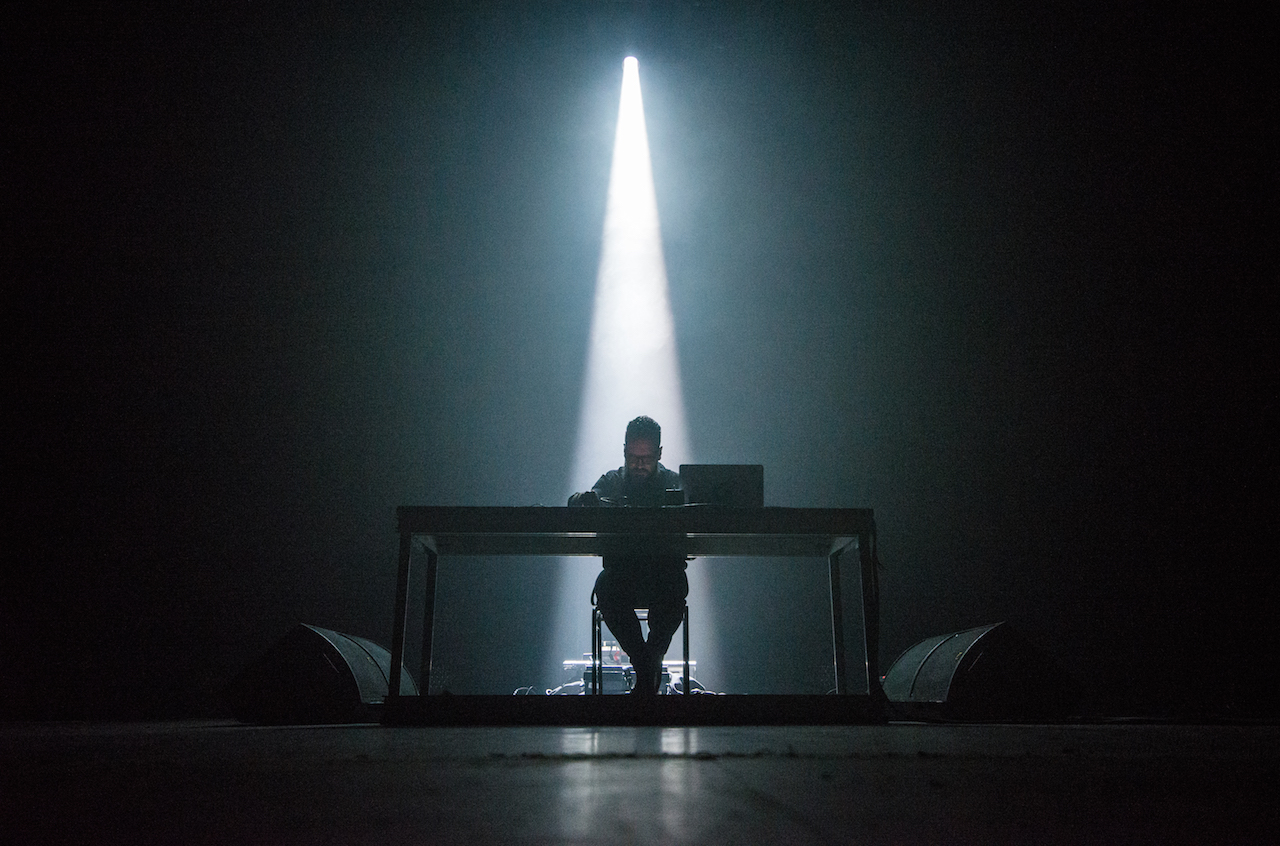 Marie Davidson There was a special air around Marie Davidson's set on Saturday night. The beloved synth artist is a Montreal local who has since moved to Berlin, and she had one of the peak-time slots at the INTER_CONNECT Berlin showcase, positioning her alongside artists like rRoxymore and Monolake. But if you were present for her performance in the sweltering SAT, there was no mistaking it for anything other than a homecoming show. Davidson played a particularly hard-hitting set, going on the attack with rapid-fire snares and slamming kicks, giving her work a harder, more EBM-inspired style than usual. Her vocals, one of the defining aspects of her music, were buried underneath the electronics in a bout of unfortunate sound mixing, but it hardly mattered: the way she stalked and moved around the stage was enough to make it one of the festival's most memorable and inspiring performances.
Marie Davidson There was a special air around Marie Davidson's set on Saturday night. The beloved synth artist is a Montreal local who has since moved to Berlin, and she had one of the peak-time slots at the INTER_CONNECT Berlin showcase, positioning her alongside artists like rRoxymore and Monolake. But if you were present for her performance in the sweltering SAT, there was no mistaking it for anything other than a homecoming show. Davidson played a particularly hard-hitting set, going on the attack with rapid-fire snares and slamming kicks, giving her work a harder, more EBM-inspired style than usual. Her vocals, one of the defining aspects of her music, were buried underneath the electronics in a bout of unfortunate sound mixing, but it hardly mattered: the way she stalked and moved around the stage was enough to make it one of the festival's most memorable and inspiring performances.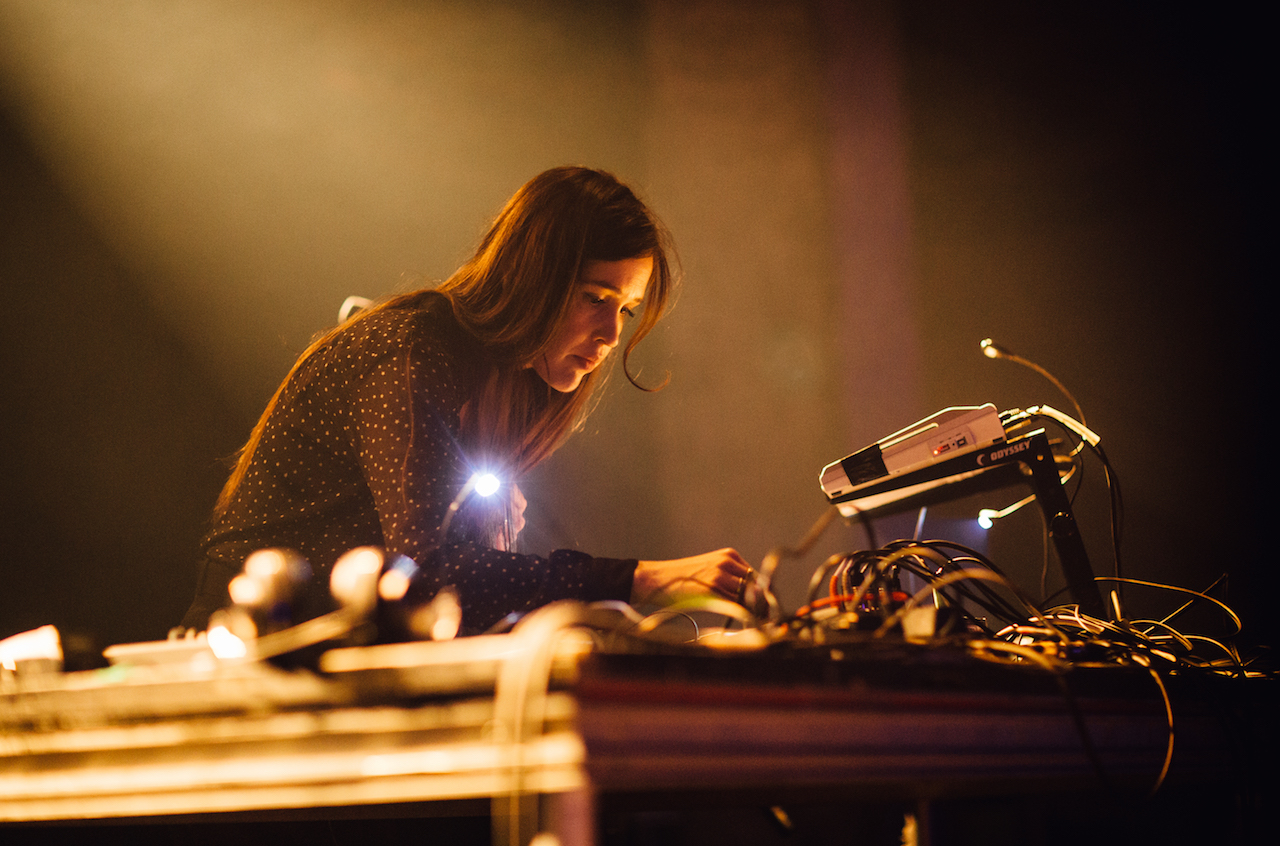 Kara-Lis Coverdale Kara-Lis Coverdale is another Montreal artist earning steady international acclaim. Often compared to trailblazing producers like Tim Hecker and Oneohtrix Point Never, Coverdale's work combines the pulsating melodies and drones of minimal music with bright, heavily manipulated and often synthetic textures. Synthetic sounds came to the fore in VoxU, a live concept piece that premiered at MUTEK. Focusing on the possibilities of the (in)human voice, it paired the sounds of a pipe organ with all sorts of choral pads and generated vocals. Chintzy sounds were elevated to high art. It was also among Coverdale's calmest and most droning compositions, so constant and occasionally relaxing that one audience member did yoga for the set's 40-minute duration. But what really made Coverdale's performance special was her control of the room. She played in the Satosphère, a geodesic dome in the SAT built for 3D projections, which hosted some of the festival's most dazzling and immersive visual experiences as part of Resident Advisor's Sunday night showcase. But Coverdale didn't bother with any of that. Instead, she used the lighting rigs that lined the perimeter of the room like an instrument: colours changed to reflect the mood, while other times the room went pitch black, with only a light above her controller visible. She would fill the room with fog at the most intense moments and then let it dissipate. During the brightest sections, even the heat from the lamps felt like a purposeful part of the performance. After an acclaimed turn as an up-and-coming artist at last year's MUTEK, 2017 was the year Kara-Lis Coverdale proved she's a heavy hitter in her own right.
Kara-Lis Coverdale Kara-Lis Coverdale is another Montreal artist earning steady international acclaim. Often compared to trailblazing producers like Tim Hecker and Oneohtrix Point Never, Coverdale's work combines the pulsating melodies and drones of minimal music with bright, heavily manipulated and often synthetic textures. Synthetic sounds came to the fore in VoxU, a live concept piece that premiered at MUTEK. Focusing on the possibilities of the (in)human voice, it paired the sounds of a pipe organ with all sorts of choral pads and generated vocals. Chintzy sounds were elevated to high art. It was also among Coverdale's calmest and most droning compositions, so constant and occasionally relaxing that one audience member did yoga for the set's 40-minute duration. But what really made Coverdale's performance special was her control of the room. She played in the Satosphère, a geodesic dome in the SAT built for 3D projections, which hosted some of the festival's most dazzling and immersive visual experiences as part of Resident Advisor's Sunday night showcase. But Coverdale didn't bother with any of that. Instead, she used the lighting rigs that lined the perimeter of the room like an instrument: colours changed to reflect the mood, while other times the room went pitch black, with only a light above her controller visible. She would fill the room with fog at the most intense moments and then let it dissipate. During the brightest sections, even the heat from the lamps felt like a purposeful part of the performance. After an acclaimed turn as an up-and-coming artist at last year's MUTEK, 2017 was the year Kara-Lis Coverdale proved she's a heavy hitter in her own right.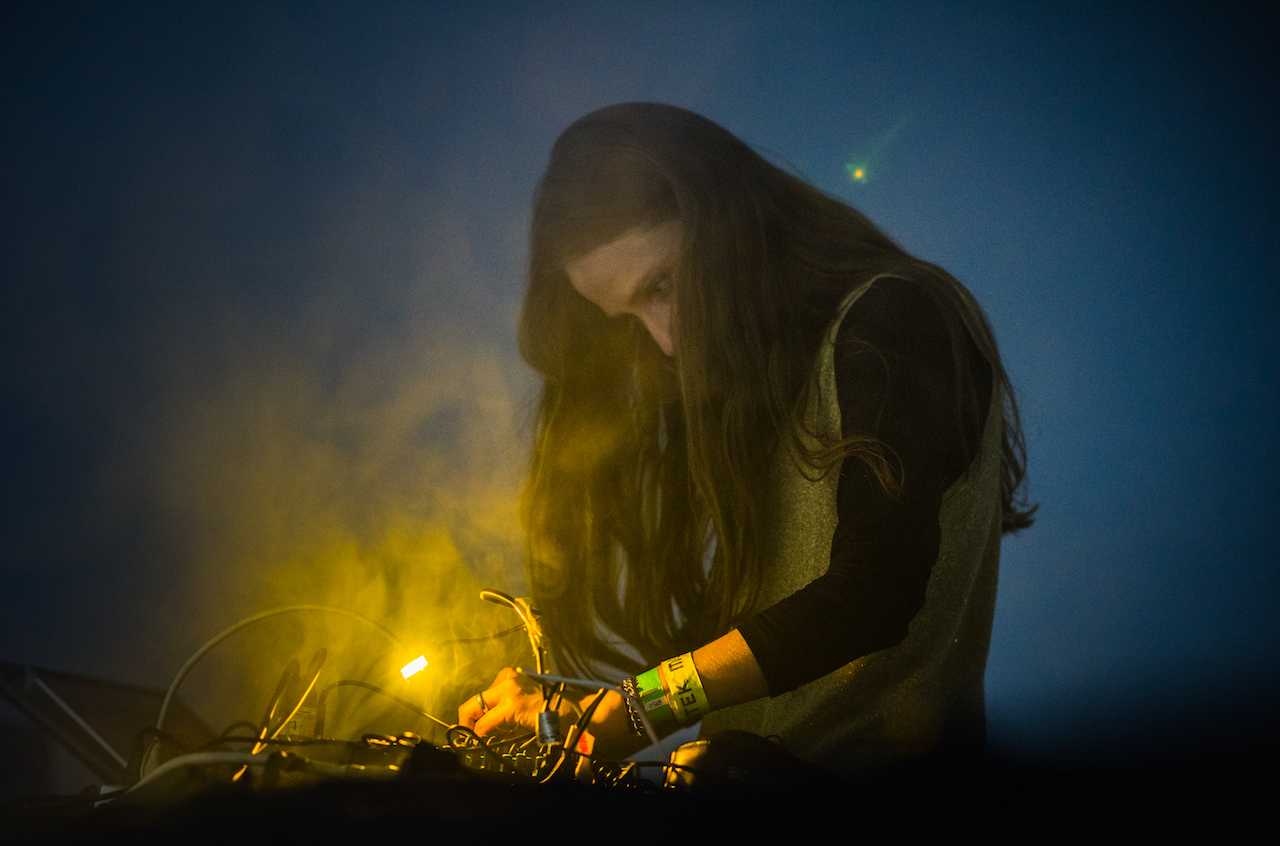 You're Me You're Me—the recently expanded trio of Vancouver artists Yu Su, Scott Gailey-Johnson and Aiden Ayers—also played in the Satosphère. They benefitted from a visual performance by LLL, whose black-and-white collages stretched and whirled across the walls and ceiling. The group showed off the kind of pastoral, drifting electronics at play on their 2016 debut LP, Plant Cell Division, but this time their sound was more detailed and inventive, bolstered with live bass guitar and combining field recordings with an old-school, new age mood. The band dredged up the sounds of life itself—running water, rainforest atmospheres—to infuse their electronics with warmth, and later debuted a new song that featured a soothing, catchy vocal over a smooth backing track, in the vein of Gigi Masin. It was an unexpected—though surprisingly natural—set from a young band who are turning into one of Canadian electronic music's most promising and idiosyncratic acts.
You're Me You're Me—the recently expanded trio of Vancouver artists Yu Su, Scott Gailey-Johnson and Aiden Ayers—also played in the Satosphère. They benefitted from a visual performance by LLL, whose black-and-white collages stretched and whirled across the walls and ceiling. The group showed off the kind of pastoral, drifting electronics at play on their 2016 debut LP, Plant Cell Division, but this time their sound was more detailed and inventive, bolstered with live bass guitar and combining field recordings with an old-school, new age mood. The band dredged up the sounds of life itself—running water, rainforest atmospheres—to infuse their electronics with warmth, and later debuted a new song that featured a soothing, catchy vocal over a smooth backing track, in the vein of Gigi Masin. It was an unexpected—though surprisingly natural—set from a young band who are turning into one of Canadian electronic music's most promising and idiosyncratic acts.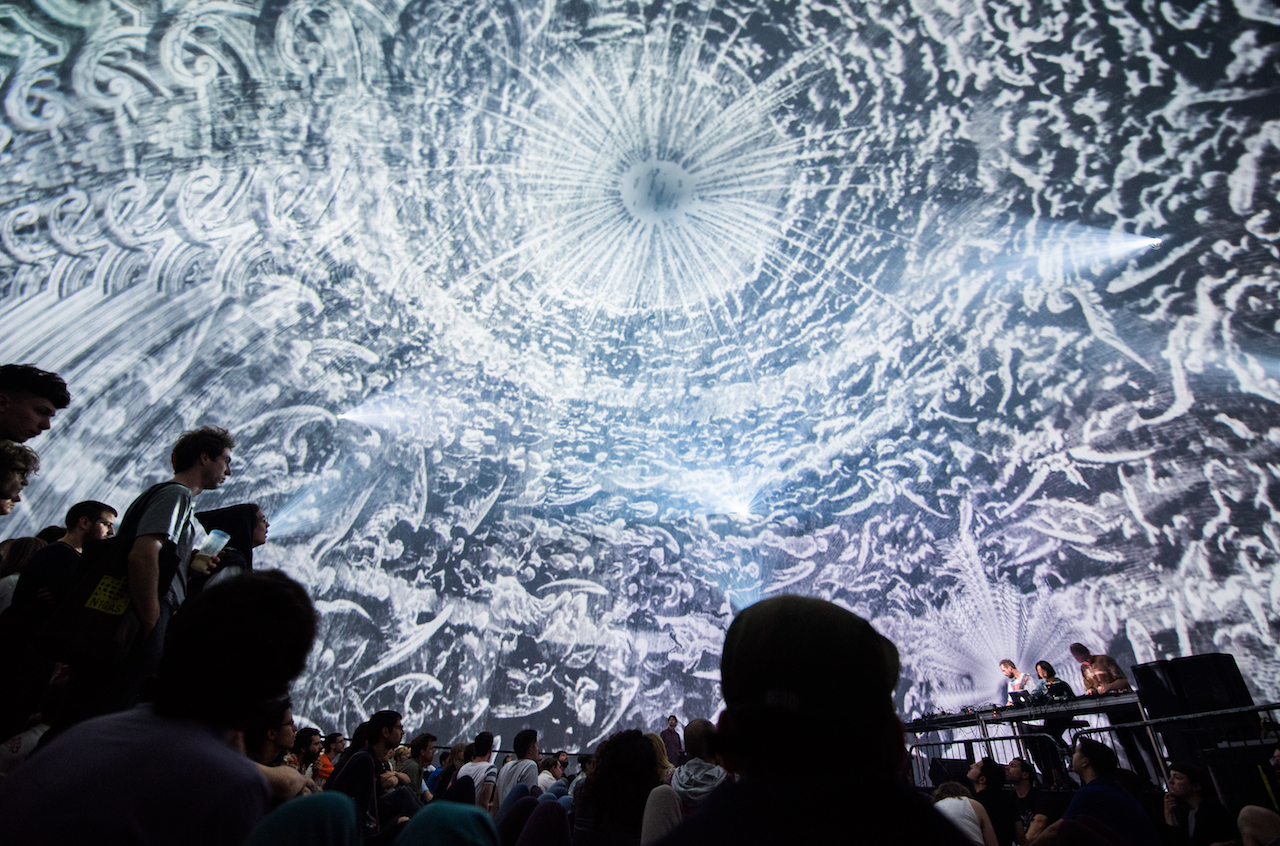 Kuniyuki Though it was 2 AM on Monday morning, Kuniyuki took the reins for the final set at MUTEK to a full and energetic crowd. After a beatless intro, the Japanese producer quickly established the lively, playful and improvisational mood that would make his performance one of the most memorable of the week. He bobbed and swayed behind his setup as he banged out quick-footed techno and house beats, making drum loops out of an empty 7 Up bottle, what looked like a colander, and countless other implements. He even broke out a flute. The evening hit its peak when an excited fan jumped onstage, flailing his arms behind Kuniyuki and dancing around him. When security tried to escort the uninvited guest away, Kuniyuki waved them off and handed the mic to the fan, who bellowed a goofy melody before finally being removed. It was uncomfortable at first, but, smiley and upbeat, Kuniyuki sampled and mixed the off-key vocals into a loop, eliciting raucous cheers from the audience. It was a cathartic release of collective energy after a long, serious festival, and an uncharacteristically goofy moment that reminded me of what makes the whole thing so fantastic. MUTEK is one of the world's most avant-garde electronic music festivals, and Montreal is one of the world's greatest party cities—combine the two and you have a formula that still wows 18 years down the line. Photo credit / Trung Nguyen
Kuniyuki Though it was 2 AM on Monday morning, Kuniyuki took the reins for the final set at MUTEK to a full and energetic crowd. After a beatless intro, the Japanese producer quickly established the lively, playful and improvisational mood that would make his performance one of the most memorable of the week. He bobbed and swayed behind his setup as he banged out quick-footed techno and house beats, making drum loops out of an empty 7 Up bottle, what looked like a colander, and countless other implements. He even broke out a flute. The evening hit its peak when an excited fan jumped onstage, flailing his arms behind Kuniyuki and dancing around him. When security tried to escort the uninvited guest away, Kuniyuki waved them off and handed the mic to the fan, who bellowed a goofy melody before finally being removed. It was uncomfortable at first, but, smiley and upbeat, Kuniyuki sampled and mixed the off-key vocals into a loop, eliciting raucous cheers from the audience. It was a cathartic release of collective energy after a long, serious festival, and an uncharacteristically goofy moment that reminded me of what makes the whole thing so fantastic. MUTEK is one of the world's most avant-garde electronic music festivals, and Montreal is one of the world's greatest party cities—combine the two and you have a formula that still wows 18 years down the line. Photo credit / Trung Nguyen